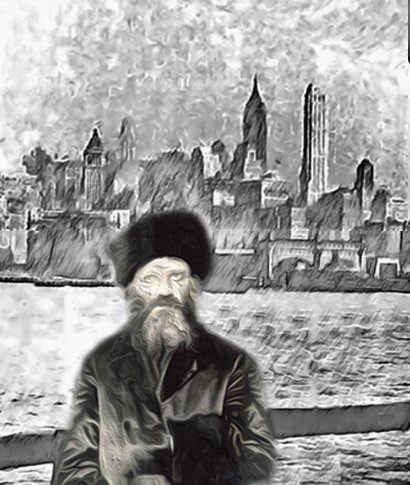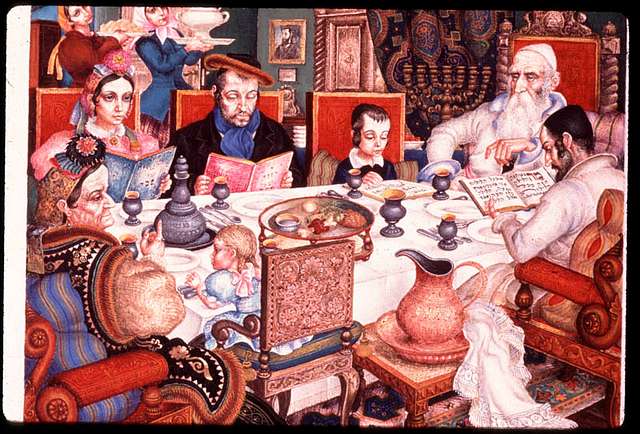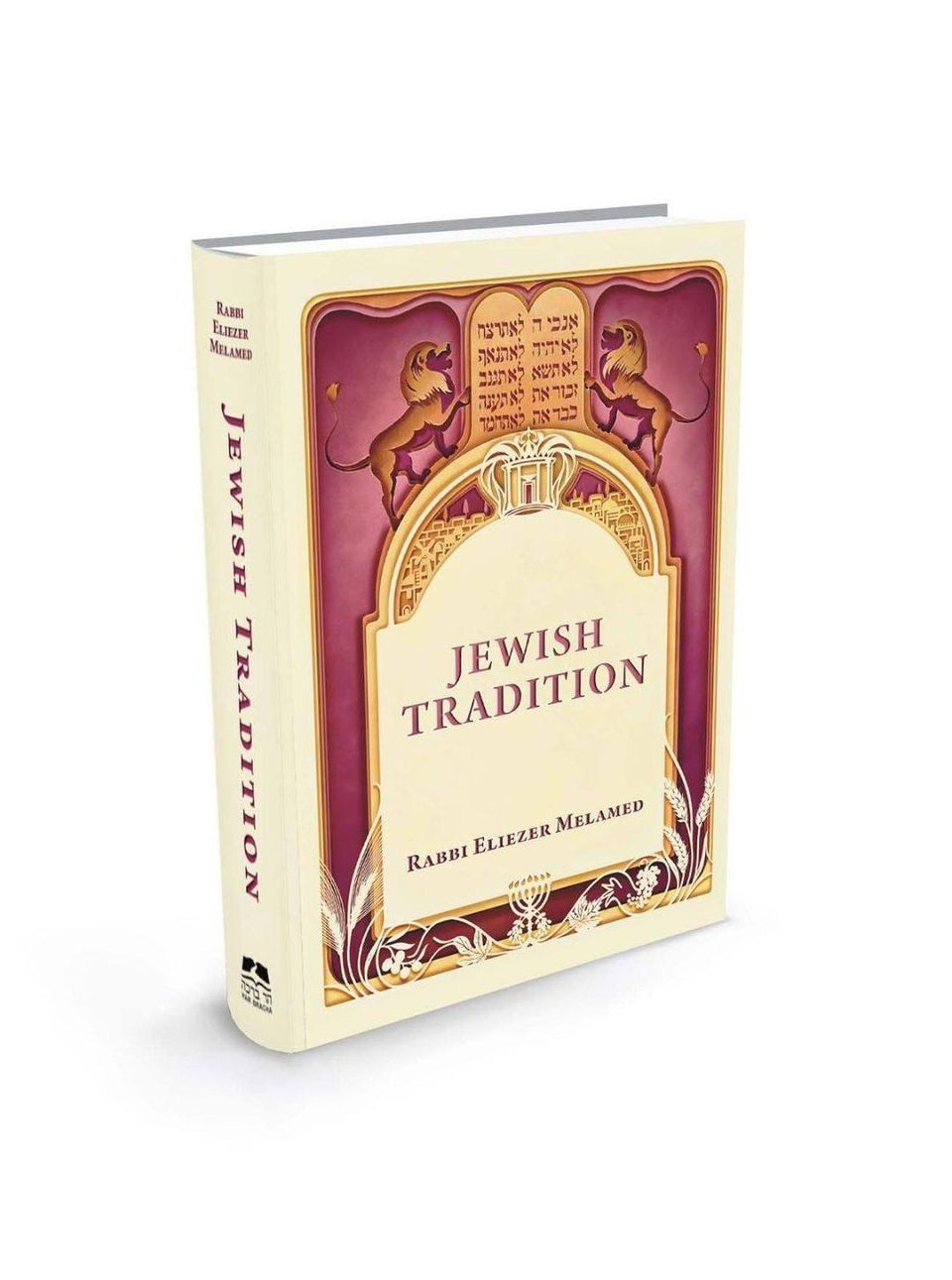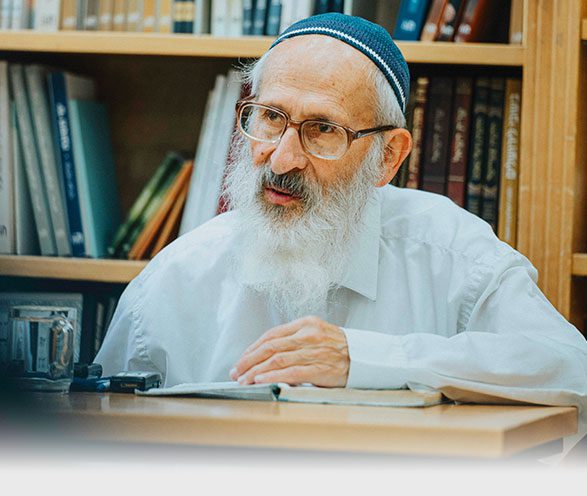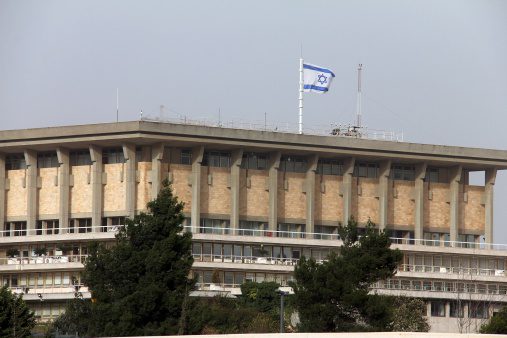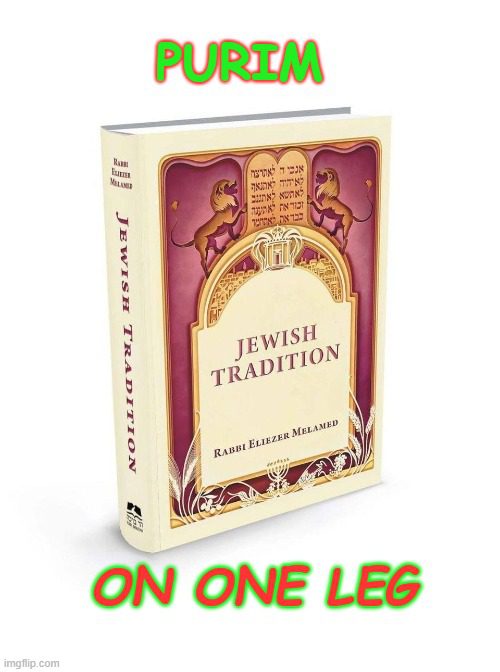PESACH AND RABBI KOOK – HIS WAYS
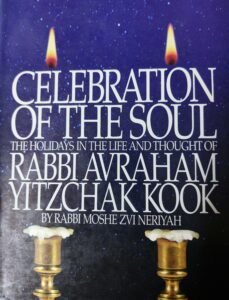
[Rabbi Kook’s teachings and customs on Pesach have been excerpted from the book “Celebration of the Soul” by HaRav Moshe Neriyah. Translated by Rabbi Pesach Yaffe.]
The Philanthropist and the Prince
The philanthropist Nathan Strauss once visited the Rabbi Kook shortly before Pesach. He presented several perplexing philosophical issues before the Rav. After hearing the Rav’s profound response, Strauss rose and kissed him. Before he departed, Strauss wrote out a check for a considerable sum for distribution to the needy who would be turning to the Rav for assistance as the holiday approached. The Rav looked at the check disapprovingly and told his honored guest the following story:
The prince of Wales once went out to hunt in the forest. While pursuing a small beast, he separated from his party and lost his way in the forest. Night fell and he remained alone amidst the trees, tired and hungry. As the darkness deepened, he noticed a point of light in the distance and began walking toward it. He found it was a group of shepherds eating their modest dinner. The prince approached them, introduced himself, and asked if he could purchase a meal. The shepherds fed him well and assured him that they would show him the way out of the forest.
After the meal, the prince asked, “How much do I owe you?” “One hundred pounds sterling,” the leader replied.
“Such a high price for such a meager meal?” he asked.
“Yes, sir,” the shepherd replied. “The price is indeed high, but we are not visited by a prince every evening.”
Strauss smiled comprehendingly and promptly doubled his donation to the poor of Jerusalem.
Aiding Torah Scholars
Rabbi Shimshon Polonski, known as the Tepliker Rav, immi־grated to Eretz Yisrael in the summer of 1922. A brilliant man with a phenomenal memory, he knew the voluminous responsa of the Chatam Sofer nearly verbatim. Shortly after his arrival in Jerusalem, he was appointed rabbi of the Beit Yisrael neighborhood. However, his salary covered only his barest needs.
Before Pesach, the Tepliker Rav visited the Rav to discuss with him a variety of halachic questions relating to the holiday. During the conversation the Tepliker Rav remarked, “They are talking about new vessels. Who has dishes for Pesach?”
The Rav excused himself and went to his study for a few minutes. When he returned, the conversation resumed. After the discussion, the Rav stood up, wished his guest a happy Pesach, and hugged him.
“When I returned home,” the Tepliker Rav related, “I found a sizeable sum of money in my jacket pocket, sufficient to purchase dishes and everything else 1 needed for the holiday.”
Aware of the financial straits of many Torah scholars in Jerusalem, the Rav would secretly send them funds, especially during the costly pre-Pesach season. He even assisted those scholars who opposed his views, charging his emissaries to conceal the source of the money from the beneficiaries. He insisted on judging even his most vehement opponents favorably, saying that they simply failed to understand him. The fact that they were Torah scholars and God-fearing men was his overriding concern.
Rabbi Shemuel Shezuri reported that “one Pesach eve, the Rav asked me to transfer money to one of his antagonists, a scholar whom I knew to be one of his fiercest opponents. I begged the Rav’s forgiveness and requested that he release me from this duty, for I could not assist a man who so dishonored him. The Rav acceded. I later learned that he dispatched another emissary to deliver the money to that zealot.”
Pesach in the Collective Settlements
In the mid-1920s, a wave of secularization swept through the collective settlements. The Rav responded with warmth and guidance, teaching basic Pesach laws to the workers, as reflected in the following letter to the collective settlement in Atarot:
“Concerned as I am with the welfare of all the workers engaged in building the Holy Land, I am honored to inform you that you must cleanse in boiling water all of the vessels which you have used throughout the year so that your milk will be fit for Pesach consumption…. Feed your livestock during Pesach with leaven- free foods like potatoes, legume husks, or sesame wafers, but not with moist grains like wheat or barley bran and other species…. I trust that your customers will, as a result, happily purchase your milk during the coming Pesach holiday. And I offer you my blessings for the holiday, the national rebirth, and your physical labor.”
Pesach Warning
The Rav was pained by reports of the brazen consumption of chametz on Pesach in the collective settlements and in the workers’ kitchens in the cities. He sent the following letter to the heads of the Histadrut:
“I beseech you from the depths of my soul, have mercy upon the honor of the people and the land of Israel. Please urge all of the settlements and factions with which you are associated to cease this awful and shameful activity of eating chametz on Pesach. Woe, this terrible misfortune is unbearable! The soul of every person quakes upon hearing of this scandalous disgrace, that our children, the builders of the land of our forefathers, strike at the vital artery, the holy of holies, the sanctuary of the redemption of the people and its salvation…the law of the festival of redemption in its full splendor.
“If one cannot afford the expensive matzah, it is a sacred obligation to make do with that which costs less. If even the cheaper matzah cannot be eaten all seven days of the festival, the minimal amount for Yom Tov will suffice, to be supplemented by fruit and vegetables, for ‘Man does not live by bread alone’ (Deut. 8:3). What is crucial is that our brethren, so precious for their work in building the land of the forefathers and settling it, do not eat or possess chametz. Eating chametz on Pesach, Heaven forfend, is a needle stabbing the heart of the entire nation, a contemptuous disregard for the holy and a violation of the word of the living God Who sustains us, our nationhood, and our hopes forever.”
Baking the Matzot
The day the Rabbi Kook baked matzot was a festive occasion. His joy in performing the mitzvah inspired everyone around him. Dressed in festival garb and accompanied by a group of students from the yeshiva, he would set out early in the morning for the Cohen Halpern bakery in the Kenesset Yisrael neighborhood of Jerusalem. When he arrived at the bakery he would don a white apron, then carefully inspect the machinery, which had already been scrupulously cleaned. With joy the Rav would pour the water — drawn specifically for this — upon the flour, which had been guarded from water from the time the wheat had been harvested. He would then turn on the machine with a jubilant cry of “Leshem matzat mitzvah” (“for the sake of the matzah that is commanded”). [See Orach Mishpat, no. 122, for a discussion of using a machine in the production of matzot lishmah.]
The Rav preferred to bake his matzot at the beginning of Nissan. Because of his scrupulous concern to use an immaculate machine and to be the first to use the oven that day, he always chose the Sunday after the first of Nissan to bake his matzot. At sunset on Thursday night, the Rav would draw the water and filter it into designated containers. The bakery would close early on Friday, and the Rav and a team of assistants would scrape and scrub the machinery, heat certain parts to incinerate the absorbed chametz, and prepare the utensils for the Sunday baking. After the matzot were baked Sunday morning, each one was carefully inspected. If the smallest fold or soft spot was detected, the matzah was discarded. The selected matzot were wrapped, boxed, and delivered to the Rav’s home, and the Rebbetzin was honored with the mitzvah of separating the challah.
Rabbi Shemuel Eliezri once asked the Rav if one should follow the custom of baking matzot for the Seder after midday on Pesach Eve (see O. Ch. 458). The Rav replied that it is preferable to bake the matzot at an earlier date for two reasons. First, on Pesach Eve, people feel rushed by their many tasks and will not have the presence of mind to supervise the operation properly. Second, after midday, even a particle of chametz in the mixture renders it unfit. The Rav added that he once received matzah that was hand baked after midday on Pesach eve and was afraid to keep it in his home, because by that hour chametz should not be seen or found in one’s possession.
Even when the Rav visited America on a fundraising campaign for the yeshivot in Eretz Yisrael and Europe, he maintained his personal participation in the baking of matzot. The Manishewitz Brothers’ Bakery was the one honored by the Rav’s visit. After the Rav used their equipment, the Manishewitzs’ promptly published a photograph of the Chief Rabbi of Eretz Yisrael pouring the drawn water into the kneading trough at their bakery.
Pesach Eve
After midday on Pesach eve the Rav would go to the Western Wall to recite the order of the Pesach service in the Temple, as was customary in Jerusalem. Despite his many tasks on the eve of the festival, he would pray at length and linger at the remnant of our Sanctuary. Rabbi Yitzchak Hutner related that one Pesach Eve, as he accompanied the Rav on his way home from the Wall, they saw Rabbi Chaim Sonnenfeld, spiritual leader of the Hungarian separatists, approaching them. The Rav hastened to wish him a happy holiday. Rabbi Sonnenfeld returned the greeting and added, “I bless you that I should see you here next year as your bare feet are immersed in blood.” (He meant that since the Rav was a kohen, he should merit to offer the Paschal sacrifice, of which the Talmud says, “It is a compliment to the descendants of Aaron that they walk in blood up to their knees” Pesachim 65b).
Aharon Yitzchak Zoslonski wrote: “I once visited the Rav’s home Pesach Eve after midday. Many people were still there waiting to speak with him. The Rebbetzin appeared. She gently asked the visitors to allow the Rav to rest a bit before the Seder. The Rav also heard his wife’s plea. He said, ‘If your husband were a wine merchant and a large crowd lined up today to purchase wine for the four cups, would you also ask them to allow him to rest?’”
The Seder
The Rav held his well-attended Seder in a great hall so that all could recline as free men. Shabbetai Daniel wrote: ‘“In every generation one must see himself as if he went out from Egypt.’ Everyone simply reads this passage, but the Rav would experience the Exodus with his entire being. His face gleamed, his breathing would grow heavy with excitement. He would transport himself back among those who hastily left Egypt, carrying the dough on his shoulder before it rose. Only when the meal would begin did the intensity wane. He would return from the Exodus to the here and now, converse pleasantly, and join in the singing. During the meal he would share his memories of Sedarim with leading Torah scholars.”
The Seder usually ended in impassioned dancing. From there the younger people would hurry to pray at sunrise at the Western Wall.
Rabbi She’ar Yashuv Cohen related: “Father [Rabbi David Cohen, the Nazir] told me the following story. Ronald Storrs, the British governor in Jerusalem, once asked the Rav’s permission to attend his Pesach Seder. Interested in maintaining peaceful relations, the Rav agreed. While considering how to accommodate the guest, the Rav recalled that Storrs was interested in ancient Greek literature. Aware of my background in Greek philosophy, the Rav invited me to the Seder. ‘It is customary to present a high official with flowers,’ he said. ‘But Rabbi Yehudah HaLevi said, “Don’t be fooled by Greek wisdom which bears flowers but not fruit.” Please, let your conversation with Storrs about Greek wisdom serve as a substitute for the customary bouquet.’
“I could not refuse the invitation. I sympathized with the Rav’s desire to maintain friendly relations with the British governor and pay him the honor he expected. I tried my best to play the role though it wasn’t long before I discovered that Storrs’ knowledge of Greek literature was quite superficial. The Rav understood my discomfort in discussing profane matters on such a sacred evening and he amply compensated me. Late at night after the Seder, he taught me wondrous passages from Zohar Chadash on the verses of Song of Songs. His profound explanations and staggering erudition in esoterica illuminated my night until the early morning hour arrived to recite the Shema”
The Second Seder
In 1934, hundreds of tourists flocked to Jerusalem to celebrate Pesach. Keren Kayemet and Keren HaYesod decided to organize a second Seder for them. In order to attract religious Jews, they turned to the Rav and asked him to sponsor the Seder and to supervise the kashrut of the meal. He refused, insisting that the second Seder was an institution of the Diaspora and would violate the honor of Eretz Yisrael.
Undeterred, the representatives of Keren Kayemet and Keren HaYesod turned to one of the older students in the Rav’s yeshiva and asked him to supervise the Seder. They promised him generous compensation but stipulated that he must secure the Rav’s approval. Unaware that the Rav had already refused to authorize the seder, the young scholar approached him and put forth his request. The Rav was distressed. Sensitive to the needs of others, he recognized the benefit that would be reaped by the young scholar and his family. After deliberating, the Rav said, “I will authorize the event, but only if the band of the Jewish Institute for the Blind is invited to play at the Seder. Furthermore, the publicity must clearly emphasize the band’s appearance. Everyone knows that instruments are not played on a festival and that therefore a Pesach Seder with musical accompaniment is not a Seder.”

